- Clone
- S17014E (See other available formats)
- Regulatory Status
- RUO
- Other Names
- Fcgr3, Fc receptor, IgG, low affinity III, Fc gamma receptor, Fc gamma receptor 3
- Isotype
- Rat IgG2a, κ
- Ave. Rating
- Submit a Review
- Product Citations
- publications
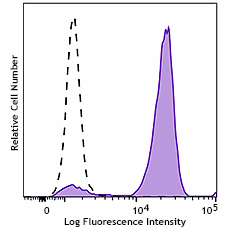
-

C57BL/6 mouse bone marrow cells were stained with anti-mouse CD16 Brilliant Violet 605™ (clone S17014E) (filled histogram) or rat IgG2a, κ Brilliant Violet 605™ isotype control (open histogram). Data shown was gated on the myeloid cell population. -

C57BL/6 mouse splenocytes were stained with anti-mouse NK1.1 (clone S17016D) PE/Cyanine7 and anti-mouse CD16 (clone S17014E) Brilliant Violet 605™ (left) or rat IgG2a, κ Brilliant Violet 605™ isotype control (right).
| Cat # | Size | Price | Quantity Check Availability | Save | ||
|---|---|---|---|---|---|---|
| 158027 | 50 µg | 244€ | ||||
CD16 also know as Fcgr3 is a 50-65 kD type I transmembrane protein, member of the Fc gamma receptor family and Ig superfamily. CD16 is expressed on most myeloid cells including monocytes, macrophages, dendritic cells, and is also expressed by NK cells and NKT cells. CD16 is involved in cell activation, phagocytosis, and antibody-dependent cell-mediated cytotoxicity (ADCC); its ligands are IgG1, IgG2a and IgG2b.
Product DetailsProduct Details
- Verified Reactivity
- Mouse
- Antibody Type
- Monoclonal
- Host Species
- Rat
- Immunogen
- Mouse CD16 - transfected cells
- Formulation
- Phosphate-buffered solution, pH 7.2, containing 0.09% sodium azide and BSA (origin USA)
- Preparation
- The antibody was purified by affinity chromatography and conjugated with Brilliant Violet 605™ under optimal conditions.
- Concentration
- 0.2 mg/mL
- Storage & Handling
- The antibody solution should be stored undiluted between 2°C and 8°C, and protected from prolonged exposure to light. Do not freeze.
- Application
-
FC - Quality tested
- Recommended Usage
-
Each lot of this antibody is quality control tested by immunofluorescent staining with flow cytometric analysis. For flow cytometric staining, the suggested use of this reagent is ≤ 0.5 µg per million cells in 100 µL volume. It is recommended that the reagent be titrated for optimal performance for each application.
Brilliant Violet 605™ excites at 405 nm and emits at 603 nm. The bandpass filter 610/20 nm is recommended for detection, although filter optimization may be required depending on other fluorophores used. Be sure to verify that your cytometer configuration and software setup are appropriate for detecting this channel. Refer to your instrument manual or manufacturer for support. Brilliant Violet 605™ is a trademark of Sirigen Group Ltd.
Learn more about Brilliant Violet™.
This product is subject to proprietary rights of Sirigen Inc. and is made and sold under license from Sirigen Inc. The purchase of this product conveys to the buyer a non-transferable right to use the purchased product for research purposes only. This product may not be resold or incorporated in any manner into another product for resale. Any use for therapeutics or diagnostics is strictly prohibited. This product is covered by U.S. Patent(s), pending patent applications and foreign equivalents. - Excitation Laser
-
Violet Laser (405 nm)
- Application Notes
-
Anti-mouse CD16/32 clones 93 and 2.4G2 both block clone S17014E staining.
- RRID
-
AB_3097611 (BioLegend Cat. No. 158027)
Antigen Details
- Structure
- Type I transmembrane protein, 50-65 kDa; member of the Fc gamma receptor family and Ig superfamily
- Distribution
-
Expressed on most myeloid cells including monocytes, macrophages, dendritic cells; also on NK cells and NKT cells
- Function
- Fc receptor, involved in cell activation, phagocytosis, and antibody-dependent cell-mediated cytotoxicity (ADCC).
- Ligand/Receptor
- IgG1, IgG2a and IgG2b
- Cell Type
- Dendritic cells, Macrophages, Monocytes, Neutrophils, NK cells
- Biology Area
- Immunology, Innate Immunity
- Molecular Family
- CD Molecules, Fc Receptors
- Antigen References
-
- Nimmerjahn F1 & Ravetch JV. 2008. Nat Rev Immunol. 8(1):34-47.
- Biburger M & Nimmerjahn F. 2012. Immunol Lett. 143(1):53-9.
- Arase N, et al. 2003. J Immunol. 170:3054.
- Gene ID
- 14131 View all products for this Gene ID
- UniProt
- View information about CD16 on UniProt.org
Related FAQs
Other Formats
View All CD16 Reagents Request Custom Conjugation| Description | Clone | Applications |
|---|---|---|
| Purified anti-mouse CD16 | S17014E | FC |
| PE anti-mouse CD16 | S17014E | FC |
| APC anti-mouse CD16 | S17014E | FC |
| FITC anti-mouse CD16 | S17014E | FC |
| PE/Dazzle™ 594 anti-mouse CD16 | S17014E | FC |
| APC/Cyanine7 anti-mouse CD16 | S17014E | FC |
| PerCP/Cyanine5.5 anti-mouse CD16 | S17014E | FC |
| Spark YG™ 581 anti-mouse CD16 | S17014E | FC |
| PE/Cyanine7 anti-mouse CD16 Antibody | S17014E | FC |
| Alexa Fluor® 647 anti-mouse CD16 Antibody | S17014E | FC |
| Alexa Fluor® 700 anti-mouse CD16 | S17014E | FC |
| TotalSeq™-B1281 anti-mouse CD16 | S17014E | PG |
| Brilliant Violet 605™ anti-mouse CD16 | S17014E | FC |
| Brilliant Violet 421™ anti-mouse CD16 | S17014E | FC |
Customers Also Purchased

Compare Data Across All Formats
This data display is provided for general comparisons between formats.
Your actual data may vary due to variations in samples, target cells, instruments and their settings, staining conditions, and other factors.
If you need assistance with selecting the best format contact our expert technical support team.
-
Purified anti-mouse CD16

C57BL/6 mouse splenocytes were stained with NK1.1 Brilliant ... 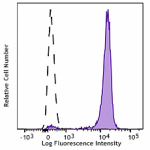
C57BL/6 mouse bone marrow were stained with purified CD16 (... 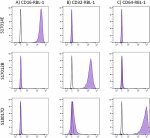
RBL-1 cells transfected with mouse A) CD16, B) CD32 or C) CD... -
PE anti-mouse CD16

C57BL/6 mouse splenocytes were stained with NK1.1 APC and CD... 
RBL-1 cells transfected with mouse A) CD16, B) CD32 or C) CD... -
APC anti-mouse CD16

C57BL/6 mouse splenocytes were stained with NK1.1 PE and CD1... 
RBL-1 cells transfected with mouse A) CD16, B) CD32 or C) CD... -
FITC anti-mouse CD16

C57BL/6 mouse splenocytes were stained with NK1.1 APC and CD... 
RBL-1 cells transfected with mouse A) CD16, B) CD32 or C) CD... -
PE/Dazzle™ 594 anti-mouse CD16
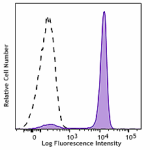
C57BL/6 mouse bone marrow cells were stained with CD16 PE/Da... 
RBL-1 cells transfected with mouse A) CD16, B) CD32 or C) CD... -
APC/Cyanine7 anti-mouse CD16
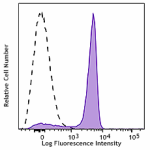
C57BL/6 mouse bone marrow cells were stained with CD16 APC/C... 
RBL-1 cells transfected with mouse A) CD16, B) CD32 or C) CD... -
PerCP/Cyanine5.5 anti-mouse CD16

C57BL/6 mouse bone marrow cells were stained with CD16 PerCP... 
RBL-1 cells transfected with mouse A) CD16, B) CD32 or C) CD... -
Spark YG™ 581 anti-mouse CD16

C57BL/6 mouse splenocytes were stained with NK1.1 Pacific Bl... -
PE/Cyanine7 anti-mouse CD16 Antibody

C57BL/6 mouse splenocytes were stained with NK1.1 FITC and a... -
Alexa Fluor® 647 anti-mouse CD16 Antibody
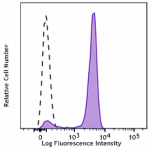
C57BL/6 mouse bone marrow cells were stained with anti-mouse... -
Alexa Fluor® 700 anti-mouse CD16
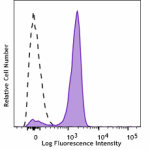
C57BL/6 mouse bone marrow cells were stained with anti-mouse... -
TotalSeq™-B1281 anti-mouse CD16
-
Brilliant Violet 605™ anti-mouse CD16
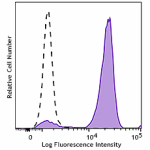
C57BL/6 mouse bone marrow cells were stained with anti-mouse... 
C57BL/6 mouse splenocytes were stained with anti-mouse NK1.1... -
Brilliant Violet 421™ anti-mouse CD16

C57BL/6 mouse splenocytes were stained with anti-mouse NK-1....
 Login / Register
Login / Register 

















Follow Us